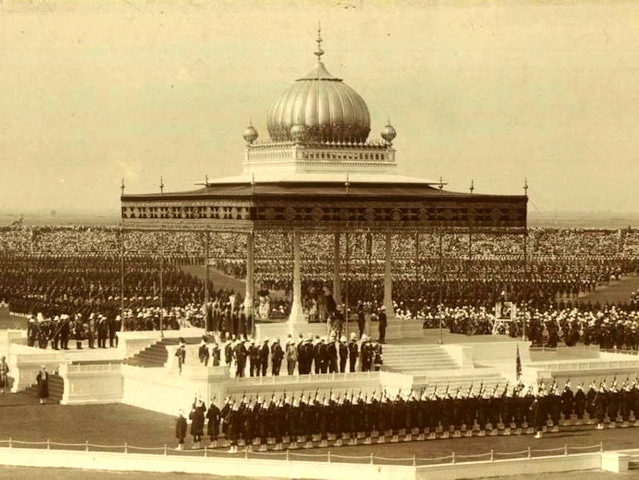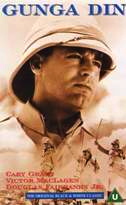
| |
Director: George Stevens, 1939
This classic film, starring Cary Grant and Douglas Fairbanks jr, was one of
the very first Hollywood depictions of India. Set in the nineteenth century,
three British soldiers and a native waterbearer must stop a secret revival of
the murderous "Thuggee" cult before it can spread across the land. The film is based
very loosely on Rudyard Kipling's 1892 ballad of the same name (though it is more like
The Three Musketeers) and is interesting for its stereotypes as much as for its story.
© RKO Pictures
|
|
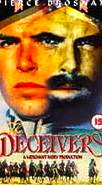
| |
Director: Nicholas Meyer, 1988
In 1825, Lt. William Savage, a reform-minded District Officer in the service of the East
India Company, undertakes to rid his district of what the British viewed as the two greatest
problems of Indian society: "Suttee" (widow immolation) and "Thuggee" (a secret cult of robbers
and murderers). Savage's actions are eventually thwarted by his profit-minded Company superiors,
but not before he attempts to infiltrate the cult and become one of the "deceivers." Based
on the 1952 novel by John Masters. © Warner Home Video
|
|
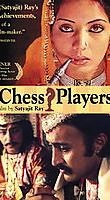
| |
Director: Satyajit Ray, 1977
In 1856, officials of the East India Company move to consolidate their
hold over North India by annexing the wealthy kingdom of Awadh. The chief minister to
the Nawab attempts to warn his ruler and local landlords of the impending danger
but they ignore him and instead indulge their obsession with playing chess.
The game becomes a metaphor for the larger game of politics played by the British as they
maneuver to capture Awadh's king. Based on the 1924 short story by Premchand.
© Shemaroo
|
|
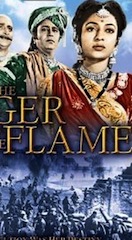
| |
Director: Sohrab Modi, 1952
This epic film tells the true story of Rani Lakshmi Bai, ruler of the small princely
state of Jhansi in central India. The Rani of Jhansi struggled to save her
state from British annexation and died in 1857 while personally leading her
soldiers into battle. Her heroism, leadership, and sacrifice have been celebrated
in folklore and repeatedly invoked by Indian nationalists. This was the first
Indian film in Technicolor and one of the first to enjoy distribution in the US
under the title The Tiger and the Flame.
© Geneon
|
|
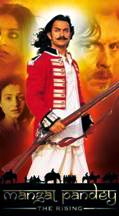
| |
Director: Ketan Mehta, 2005
This Bollywood epic is the first major film to focus on the 1857 Indian Rebellion—or
"Mutiny" as it is usually referred to in British history. The story follows the rebel
leader Mangal Pandey, an Indian sepoy in the service of the East India Company, and his
friendship with a British officer. Pandey was a real figure but one about whom little is
known. Filming began in 2003 and the opening scene was launched by Charles, Prince of Wales,
during an official royal visit to India.
© Yash Raj Films
|
|
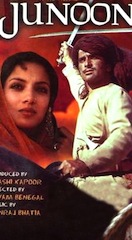
| |
Director: Shyam Benegal, 1979
Set during the Uprising of 1857, this film focuses on three women of an Anglo-Indian
family who take refuge from the rebels with a local moneylender to whom they have a
substantial debt and who, thus, has a vested interest in their survival. When they
are discovered, their lives are spared as the rebel leader, Javed, wishes to make the
youngest woman, Ruth, his second wife. The plot is further complicated when British
forces return seeking vengeance for the mutiny.
© Shemaroo
|
|
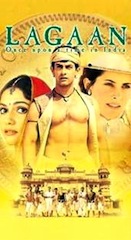
| |
Director: Ashutosh Gowariker, 2001
In 1893, the people of a small village in colonial India hope that they
will be excused from paying lagaan, the crippling land tax that
the British have imposed. Instead, the capricious officer in charge
challenges them to a game of cricket, a game totally unknown to
them. If they win, they get their wish; if they lose, the increased
tax burden will destroy their lives.
© Columbia/TriStar
|
|
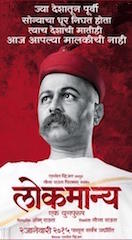
| |
Director: Om Raut, 2015
A Marathi biopic of the fiery nationalist Bal Gangadhar Tilak, lionized as Lokmanya ("revered by the people"), who advocated for a confrontational approach to ridding India of its British rulers. Tilak's embrace of Indian culture and rejection of English education made him popular among the Marathi-speaking peasantry of Western India and his writings and speeches gained him a national following while leading to his imprisonment on charges of sedition. Tilak died in 1920, the year that Gandhi's first Non-Cooperation campaign began.
© Essel Vision
|
|
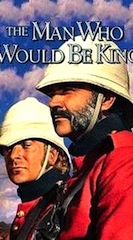
| |
Director: John Huston, 1975
This adaptation of the famous 1888 novella by Rudyard Kipling tells
the story of Daniel Dravot and Peachy Carnehan, two ex-soldiers
roaming through British India. They decide that the country is too
small for them, so they trek beyond the Northwest frontier to "Kafiristan"
in order to become kings in their own right. Kipling appears briefly
as a character in his own fictional tale.
© Warner Home Video
|
|
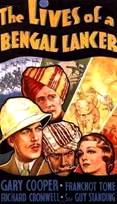
| |
Director: Henry Hathaway, 1935
The 41st Bengal Lancers are stationed on the Northwest Frontier of British India, guarding
against Afghan invaders led by the wily Oxford-educated Mohammed Khan. Experienced, though
insubordinate, Lt. McGregor (Gary Cooper) is joined by two younger officers through various
adventures and hardships. This film is a noteworthy period piece from the 1930s but is less
well known than Gunga Din, which was released a few years later and has become
a cinema classic. © Universal
|
|
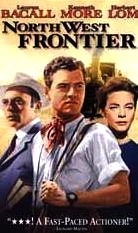
| |
Director: J. Lee Thompson, 1959
This film takes place in 1905 in the Northwest mountain regions of India where a local Hindu raja
allied to the British is battling rebel Muslim tribesmen. In order to get his son—the crown
prince—and his governess to safety the raja entrusts them to the care of a British officer.
The film is a typical Saturday morning cliffhanger, but the direction is quite good.
© RCI Home Video
|
|
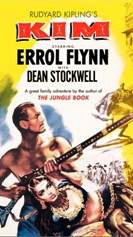
| |
Director: Victor Saville, 1950
This adaptation of Rudyard Kipling's famous adventure novel from 1901 recreates
the "Great Game" of spying and surveying in British India's Northwest frontier.
The title character is a young British orphan who, like an Anglo-Indian Huck Finn,
roams the bazaars and roads of his adoptive country surviving through theft,
begging, and being a messenger and spy for the British.
© Warner Home Video
|
|
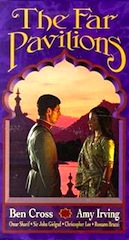
| |
Director: Peter Duffell, 1984
Based on the bestselling 1978 novel by M.M. Kaye, this miniseries is an epic of high
adventure in colonial India revolving around the romance between Anjuli, a half-caste
Indian princess, and Ash, a British officer raised in India. The Far Pavilions
drew upon and helped perpetuate a popular sense of "Raj nostalgia" in the early 1980s.
As such, it offers a lavish, entertaining, but highly romanticized vision of exotic
India under British rule.
© Acorn Media
|
|
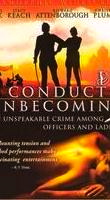
| |
Director: Michael Anderson, 1975
The plot revolves arounds a scandal in a British regiment stationed in India in the 1870s.
Lt. Drake is from a middle-class background and is eager to advance himself by making the
right impression. Lt. Millington, the son of a general, is not keen on army life and desires
to get out as soon as he possibly can. When the widow of the regiment's most honored hero
is assaulted, Drake must defend Millington from the charges in an unusual court-martial.
Based on the 1969 play by Barry England.
© Crown Films
|
|
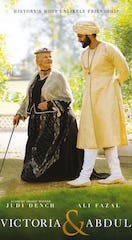
| |
Director: Stephen Frears, 2017
In 1887, Abdul Karim, a young police clerk from Agra, is selected by the British colonial goverment to travel to London to present a gift to Queen Victoria on the occasion of her Golden Jubilee. Abdul strikes up an unlikely friendship with the "Empress of India" and stays on in Britain to become her servant and, at her request, her munshi (teacher) of Urdu and the Qur'an. When Victoria dies in 1901, Abdul returns to India. Based on the book by Shrabani Basu and Abdul's diary discovered in 2010.
© BBC Films
|
|

| |
Director: Satyajit Ray, 1984
In 1907, Nikhil—a wealthy yet enlightened and charitable Bengali landowner—encourages
his wife Bimala to emerge from the traditional female seclusion of purdah and introduces
her to his old friend Sandip, a radical leader in the Swadeshi movement. Bimala is
deeply affected by Sandip's revolutionary fervor and experiences a profound political
awakening that draws her out of her home and into the tumultuous world of Indian nationalism. Based
on the 1916 novel by Rabindranath Tagore.
© Columbia/TriStar
|
|
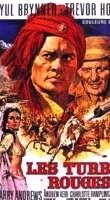
| |
Director: Ken Annakin, 1967
Set in the 1920s, this film is based very loosely on the true exploits
of the notorious Bhanta dacoit, Sultana, and the colonial police officer,
Freddy Young, whose mission it was to capture him. Sultana (Yul Brynner)
and Young (Trevor Howard) develop a strong respect for each other during
their game of evasion and pursuit across the hills and plains of North
India. However, the portrayal of Sultana as a nationalist rebel and Young as ambivalent
toward British imperialism in India is historically inaccurate. © Rank Organisation
|
|
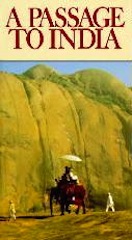
| |
Director: David Lean, 1984
Tensions between Indians and the colonial British residents of the town of Chandrapore boil over
when a visiting Englishwoman, Adela Quested, accuses a young Indian physician, Dr. Aziz, of rape
during a tour of the local caverns. Based on E.M. Forster's 1924 novel, this film can be seen as
a study of colonial relations, perceived differences between East and West, and the nature of memory
and friendship.
© Columbia/TriStar
|
|
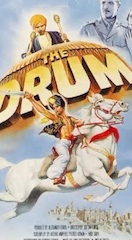
| |
Zoltan Korda, 1938
Set in the Northwest Frontier, the plot revolves around an uprising against the British and their Indian allies. The film offers a gallery of imperial stereotypes: the gallant English officer and his devoted wife, the plucky Scottish drummer, the treacherous Indian rebel, and the obsequious loyal prince. Though popular with British audiences, The Drum caused protests in Madras and Bombay, where it was viewed—not unreasonably—as pro-British propaganda. Some filming was done in the princely state of Chitral, now the province of Khyber-Pakthunkhwa, Pakistan.
© United Artists
|
|
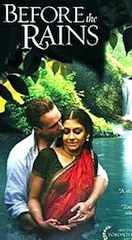
| |
Director: Santosh Sivan, 2007
Set in 1937 in the Malabar District of the Madras Presidency, this film focuses on an affair between an English spice plantation owner and his Indian housekeeper that ends tragically. The central character is T.K., a servant on the plantation, who discovers the affair and is torn by loyalty to his employer, village politics, and the rising tide of Indian nationalism. Among other things, the film captures well the beauty of the Indian state of Kerala in which it was filmed.
© Lions Gate
|
|
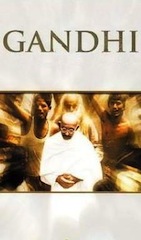
| |
Director: Richard Attenborough, 1982
This epic film portrays the life of Mohandas K. Gandhi from his days
as a young lawyer in South Africa to his death as the spiritual
leader of the Indian nation shortly after independence. It also
provides a vivid account of the Indian nationalist movement from
its beginnings through the independence and partition of the Indian
subcontinent. This critically-acclaimed film took decades to produce and won eight Academy Awards in 1983.
© Columbia/TriStar
|
|
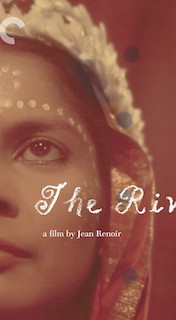
| |
Director: Jean Renoir, 1951
This coming of age story revolves around Harriet, the daughter of an English jute mill owner, who lives in a house on the banks of the Ganges. Harriet's family life and friendships immerse her in a world that blends Indian and western culture. Based on the 1946 novel by Margaret Rumer Godden, The River was the first Technicolor film made in India. Martin Scorsese saw this film as a child and it had a profound effect on his later development as a filmmaker. Satyajit Ray, the great Bengali director, also cited The River as a major influence on his style of filmmaking.
© Criterion
|
|
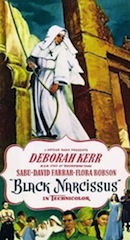
| |
Directors: Michael Powell and Emeric Pressburger, 1947
This strange and haunting film focuses on a group of Anglican nuns who arrive in a remote location in the Himalayas to set up a school and clinic for the local residents. The fragmentation and collapse of their own community force them to abandon the mission. The film was released a few months before India’s independence and some critics speculate that the plot is an allegory about Britain’s retreat from India. Based on the 1939 novel by Margaret Rumer Godden.
© Criterion
|
|
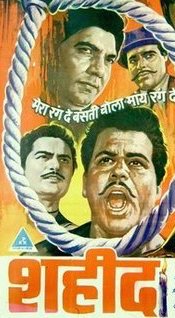
| |
Director: S. Ram Sharma, 1965
This classic of Indian cinema portrays the controversial life
and death of Bhagat Singh, the Punjabi revolutionary who took up arms
against colonial rule in India. Condemned by the British as a terrorist
and hailed by many Indians as a freedom fighter, Bhagat Singh was
initially inspired by the Gandhian example of non-violent non-cooperation
but later rejected it after growing frustrated at its apparent ineffectiveness.
© Digital Entertainment
|
|
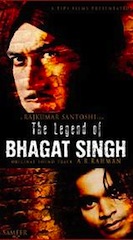
| |
Director: Raj Kumar Santoshi, 2002
This 2002 film retells the inspiring tale of Bhagat Singh made famous in
Shaheed
(1965). In the late 1920s, the revolutionaries of the Hindustan Socialist Republican
Army carried out a campaign of bombings and assassinations in Punjab to force the British
out of India. In 1931, Bhagat Singh and two companions were sentenced to death and hanged
in Lahore and, in the process, became martyrs for the Indian nation.
© Tips Films Pvt. Ltd.
|
|
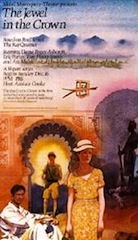
| |
Director: Christopher Morahan, 1984
This fourteen-part miniseries originally produced for Granada
Television in Britain tells the story of a small group of Britons
and Indians from the middle of the Second World War to the independence
of India and Pakistan in 1947. The historical authenticity of the plot
and complex characters provide an excellent glimpse into the psyche
of the British in India during the final days of the "Raj." Based on
Paul Scott's Raj Quartet novels published between 1965 and 1975.
© A&E Home Entertainment
|
|
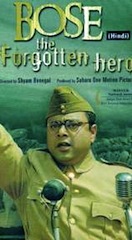
| |
Director: Shyam Benegal, 2005
This film focuses on the final years in the life of Subhas Chandra Bose, one of
the most controversial figures in Indian nationalism. A rising star in the freedom
movement, Bose fell out with Gandhi and was pushed to the margins of Congress politics.
At the outbreak of war in 1939, he fled to Germany and later conspired with Japanese
forces to lead an army of Indian soldiers against the British during the Burma campaign.
Bose remains a hero to many Indians, especially in his native Bengal.
© Sahara Media
|
|
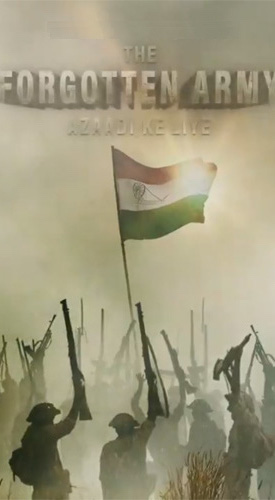
| |
Director: Kabir Khan, 2020
This limited series tells the story of the Azad Hind Fauj, the Indian National Army, formed
from Indian Army prisoners and civilians after the fall of Singapore to the Japanese in early
1942. Led by the Bengali nationalist Subhas Chandra Bose, the men and women of the INA fought
alongside Japanese forces in Burma in 1944-45. After World War II, the captured INA officers
were tried for treason, but their example inspired Indian nationalists and accelerated the end
of British rule in India. © Amazon
|
|
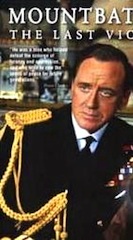
| |
Director: Tom Clegg, 1986
This TV miniseries traces
the events and experiences of the last viceroy of India, Lord Louis
Mountbatten, and his wife Lady Edwina. In early 1947, Mountbatten arrived in India
to oversee the transfer of power to independent India and Pakistan.
The film captures well the challenges, dilemmas, and tragedies
involved in the British withdrawal and the partition of the Indian subcontinent.
© Bonneville Video
|
|
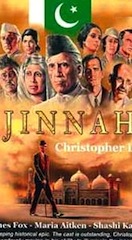
| |
Director: Jamil Dehlavi, 1998
Muhammad Ali Jinnah being judged in the afterlife is the premise of this
controversial film about the founder of Pakistan. The story traces Jinnah's political
development from champion of Hindu-Muslim unity to his demand for a separate Muslim state.
The film was meant to revise the largely unflattering portrayal of Jinnah presented
in earlier films such as Sir David Attenborough's Gandhi.
Yet the casting of an Englishman (veteran English actor Sir Christopher Lee) in the
title role was criticized by some Pakistanis.
© Dehlavi Films
|
|
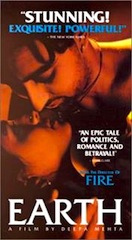
| |
Director: Deepa Mehta, 1998
The movie opens in the city of Lahore in Punjab in 1947 before India and
Pakistan became independent. Lahore is a cosmopolitan city, depicted
by a group of working class friends from different religions. The
rest of the movie chronicles the fate of this group and the maddening
religious conflict that sweeps across Punjab as the partition of
the two countries is decided and Lahore is given to Pakistan. Based on the 1988
semi-autobiographical novel The Ice Candy Man by Bapsi Sidhwa. © New Yorker Films
|
|
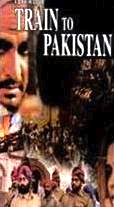
| |
Director: Pamela Rooks, 1998
Tensions run high in a Punjab village in the run-up to partition between independent
India and Pakistan. Sikhs living in this border town have heard rumors of Muslims
assaulting, killing, and raping other Sikhs and Hindus—many of whom are their
friends and relatives. Enraged at the breakdown of civil order and eager for
revenge, they plan their own attack upon a crowded train full of Muslims headed
to Pakistan. Based on the 1956 novel by Khushwant Singh.
© Video Sound
|
|
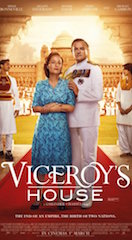
| |
Director: Director: Gurinder Chadha, 2017
The transfer of power and partition of India and Pakistan told largely through the
experiences of the house staff at the stately New Delhi residence of the viceroy
following the arrival of Lord and Lady Mountbatten in early 1947. As the clock ticks
down to independence, the servants prepare for an uncertain future for themselves and
their families. This film was lambasted by historians for the unsupported premise that
partition was conceived as a conspiracy by Churchill's wartime government to contain
postwar Soviet expansion into the oil-rich Middle East. © Pathé
|
|
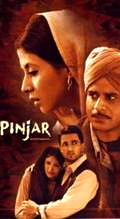
| |
Director: Chandra Prakash Dwivedi, 2003
Lajjo is a recently married Hindu woman abducted by Muslims during the chaos
of partition and taken to Pakistan. There she is forced to become the second
wife of an abusive and controlling alcoholic. Her determined sister-in-law,
Puro, sets out to search for her, encouraged by her brother, but cautioned
by her parents who would prefer not to lose another child. A compelling
story that deals with abduction, a widespread and largely overlooked aspect
of partition violence.
© Lucky Star Entertainment
|
|
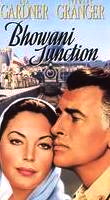
| |
Director: George Cukor, 1956
In the summer of 1947 the British are on the verge of finally leaving India.
Among the few sorry to see them leave are the Anglo-Indians—half British and
half Indian. They are going to miss the patronage of their white cousins, the
job reservations, and the important status and positions they currently hold.
This film revolves around Victoria, an Anglo-Indian woman and her relationships
with British, Indian, and Anglo-Indian men. Based on the 1954 novel by John Masters.
© MGM
|
|
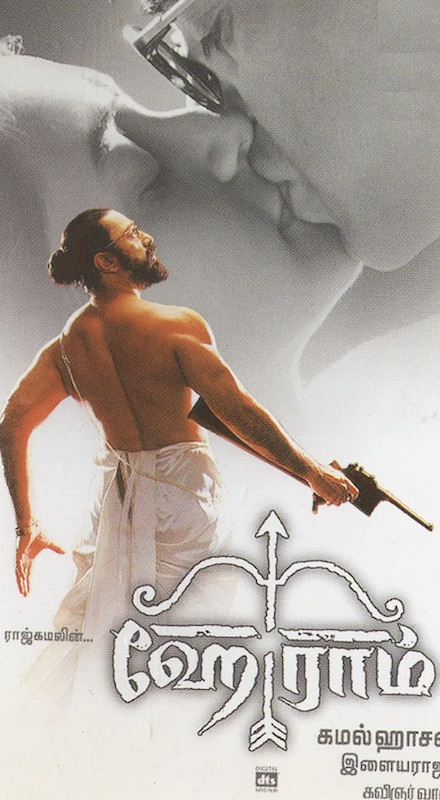
| |
Director: Kamal Hasan, 2000
This film traces the descent of an Indian archaeologist from moderate
politics into Hindu fundatmentalism after the murder of his wife in the
Calcutta riots of 1946. Although produced as a commercial Hindi film,
it boldly addresses the communal violence that accompanied the partition
of the subcontinent and the reaction of the Hindu right to Gandhi's pleas
for communal harmony. Some "disturbing" portions were cut by the Indian film
censor board.
© Blue Mountain Digital
|
|

| |
Directors: Ismail Merchant and Madhur Jaffrey, 1999
In 1954, seven years after India has gained independence from Britain, many Indians
still feel like second-class citizens in their own country, as the nation's sovereignty
has not immediately erased the perception that the British are superior to Indians. An
example is Cotton Mary, an Anglo-Indian nurse in the employment of the wife of a BBC
correspondent. Mary claims she is the daughter of a British army officer (although she
has no firm evidence) and views herself as more British than Indian.
© Universal
|
|
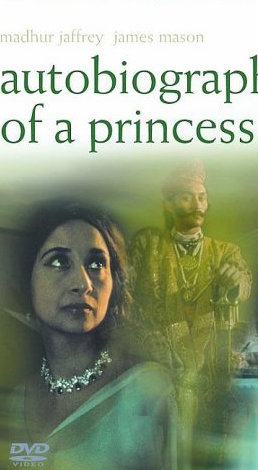
| |
Director: James Ivory, 1975
On the anniversary of her father's death, an exiled Indian princess (Madhur Jaffrey) celebrates his memory in her London flat by serving tea and showing a selection of 16mm home movies to her guest, her father's secretary, Cyril Sahib (James Mason). A wistful look back at the princely states of British India featuring rare archival film footage from the erstwhile states of Jaipur, Jodhpur and Bikaner.
© Criterion
|
|
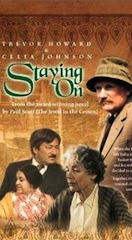
| |
Director: Silvio Narizzano, 1979
Based on Paul Scott's Booker Prize-winning novel from 1977, this film tells the story of
retired colonel Tusker Smalley and his wife Lucy who made the decision to "stay on"
in India after the British withdrew in 1947 and as most of their friends returned home.
Now retired, Tusker and Lucy are the only remaining British residents in a once-busy
hill station. Problems arise when the Indian owner of their bungalow plans to change
the one corner of India in which they hoped to preserve their Anglo-Indian life.
© HBO Films
|
|

| |
Director: James Ivory, 1982
Anne, an Englishwoman, is investigating the life of her great-aunt Olivia whose
destiny had always been shrouded with scandal. The search leads back to the early
1920s, when Olivia, recently married, came to live with her civil servant husband
in an Indian princely state. Slowly, Anne discovers, upon getting pregnant by an
Indian local in the early 1980s, that she and Olivia have more than a little in
common. Based on the 1975 novel by Ruth Prawar Jhabvala.
© Home Vision Entertainment
|
|

